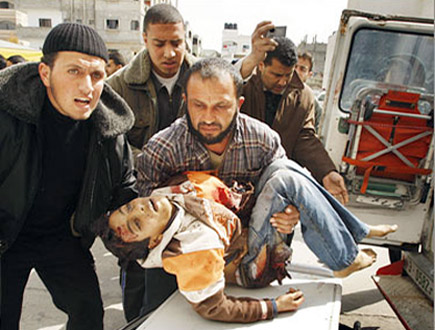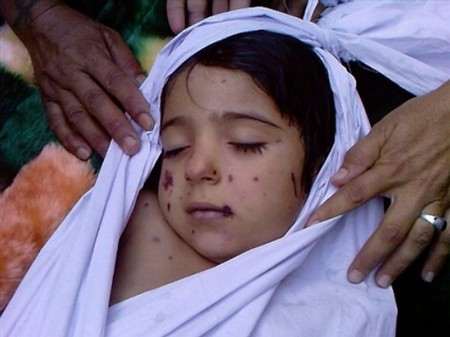
| THE HANDSTAND | NOVEMBER-JANUARY2010 |
word of God
what sort of mental leprosy is this?:
 gaza
gaza
"I believe that Christ died for my sins and I am
redeemed through him. That is a source of strength and
sustenance on a daily basis." - Barack Obama.
Washington Post,
August 17, 2008
 AFGHAN
AFGHAN
HIDING THE EVIDENCE OF
TORTURE BY USA
Supreme Court Overturns Decision on Detainee Photos
Published: November 30, 2009
WASHINGTON — The Supreme Court on Monday vacated a lower court ruling that would have required the government to release photographs showing the abuse of prisoners in Iraq and Afghanistan. The decision was three sentences long and unsigned, and it followed the enactment of a law in October allowing the secretary of defense to block the pictures’ release. The Supreme Court sent the case back to the lower court, the United States Court of Appeals for the Second Circuit, in New York, for further consideration in light of the new law.
The case was brought by the American Civil Liberties Union under the Freedom of Information Act, which makes disclosure of information in the hands of the executive branch mandatory unless an exemption applies. The Second Circuit ordered the photos released last year, and the Justice Department initially recommended against an appeal to the Supreme Court.But President Obama overruled his lawyers, saying his national security advisers had persuaded him that releasing the photos would inflame anti-American sentiment abroad and endanger American troops. Some of the pictures, according to a government brief, showed “soldiers pointing pistols or rifles at the heads of hooded and handcuffed detainees,” a soldier who appears to be striking a detainee with the butt of a rifle, and a soldier holding a broom “as if sticking its end” into a prisoner’s rectum.
In the Second Circuit, the government relied on an exemption to the freedom of information law that applies to “information compiled for law enforcement purposes” that “could reasonably be expected to endanger the life or physical safety of any individual.”Judge John Gleeson, writing for a unanimous three-judge panel of the Second Circuit last year, said the exemption required a specific anticipated danger. The exemption “may be flexible, but it is not vacuous,” Judge Gleeson wrote. Referring to “a population the size of two nations and two international expeditionary forces combined,” he said, is insufficient. The government’s reading, the judge added, would create “an alternative secrecy mechanism far broader than the government’s classification system.”The Supreme Court’s summary order in the case, Department of Defense v. A.C.L.U., No. 09-160, did not address whether that ruling was correct. It merely said the new law required reconsideration of the case.
The law applies to photographs taken from Sept. 11, 2001, to Jan. 22, 2009, showing “the treatment of individuals engaged, captured or detained after Sept. 11, 2001, by the armed forces of the United States in operations outside of the United States,” so long as the secretary of defense certifies that disclosure “would endanger citizens of the United States, members of the United States armed forces or employees of the United States government deployed outside of the United States.”
Robert M. Gates, the secretary of defense, signed the required certification on Nov. 13.
Human rights groups and news organizations, including The New York Times, urged the Supreme Court to refuse to hear the case. The court’s brief order indicated that Justice Sonia Sotomayor, who until recently was a judge on the Second Circuit, did not participate in Monday’s decision. Judge Sotomayor was not a member of the appeals court panel that ordered the photos released.The A.C.L.U. issued a statement saying it would continue to fight for disclosure of the pictures. “We continue to believe that the photos should be released, and we intend to press that case in the lower court,” said Steven R. Shapiro, the group’s legal director. “No democracy has ever been made stronger by suppressing evidence of its own misconduct.”